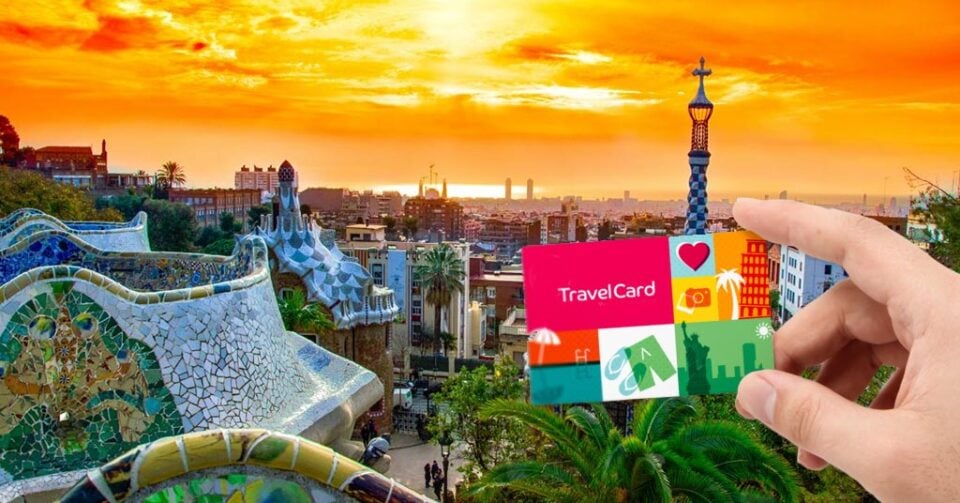A trip to the capital of Catalonia, a city (according to ancient legends) founded by Hercules, is not only long-awaited and mysterious but also requires special preparation. Getting acquainted with its history and seeing at least a fragment of its landmarks is offered through various excursion routes. By paying for services, you can experience the extraordinary atmosphere of the Main Royal Palace, where the kings of Catalonia solemnly welcomed Columbus. You can enter numerous churches, cathedrals, and the Town Hall building. You can get to know the “heart” of the city – the ensemble of buildings of the Gothic Quarter. You’ll be amazed by the architecture of Antoni Gaudí, visit museums, art galleries, and theaters. In this beautiful city, famous artists and sculptors created their masterpieces. Some of them can be seen using Barcelona’s free entertainments. This helps save significantly on travel expenses without reducing the quality of your acquaintance with Barcelona.
Citadel Park
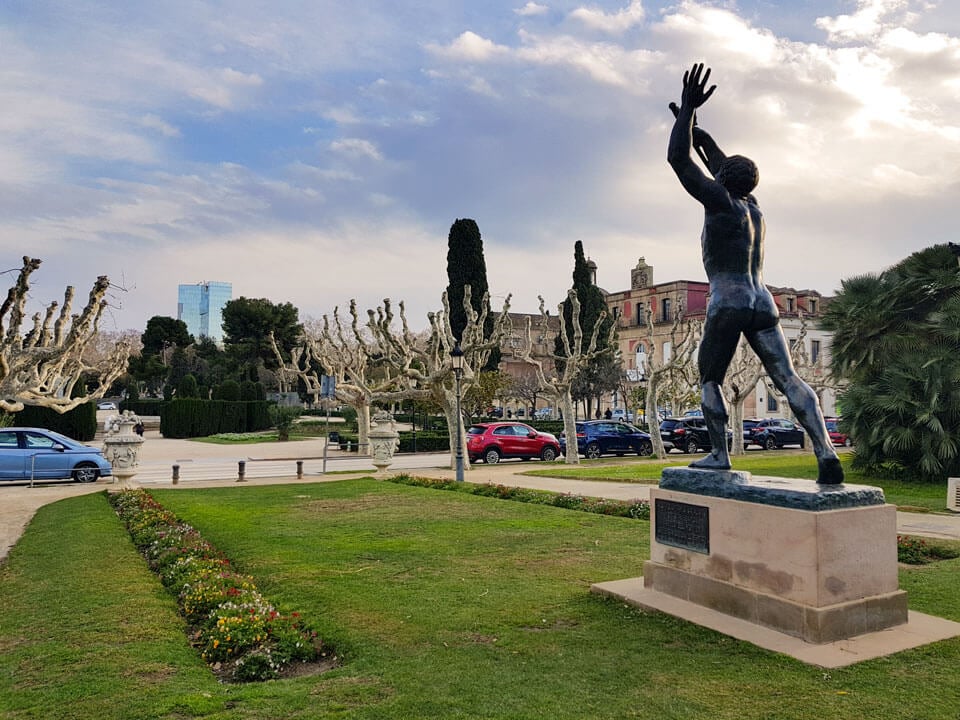
In the central part of the city is one of the favorite resting places for residents and a walking destination for guests. Its appearance is linked to the historical period of the 18th century, the construction of strong fortress walls. Later, through the efforts of famous architects, the park was adorned with fountains, sculptures, flower beds, and alleys. Part of the city turned into a luxurious recreation area, harmoniously complementing its extraordinary atmosphere. It’s pleasant to walk here with children or just relax on the shore of the lake.
You can see the huge “Cascade” fountain, made in the form of a Triumphal Arch and unique sculptures of Venus, Aurora, and mythical animals. Children are especially interested in the zoological museum (Castle of the Three Dragons) and the zoo (here you need to pay an entrance fee). It is considered one of the best zoos in Europe. You can walk through the famous promenade – the Companias alley for free in the park.
You can also see the buildings of an old chapel, the governor’s palace, and the arsenal. It’s suggested to start your tour of the park from the location of the city’s Triumphal Arch. It is at the beginning of Companias Avenue. It’s easy to get here by metro L4. Get off at the Ciutadella / Vila Olimpica station. Take tram No. 4 to the Wellington stop.
Barceloneta Beach
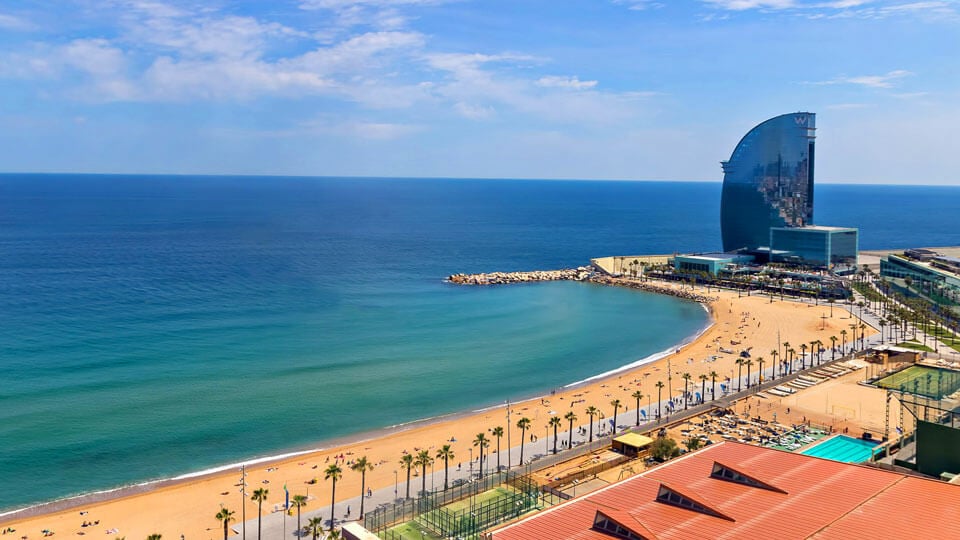
The oldest beach in the city is a 15-minute walk from the famous Columbus Monument. A wide coastal strip of golden sand (1.1 km long) appeared on the site of an old fishing village. The city area changed during the preparation for the 1992 Olympic Games. A beach infrastructure formed here, with hotel buildings, cafes, and restaurants appearing. A promenade was arranged for leisurely walks along the sea shore. Areas for rollerblading enthusiasts were designated.
Sports, children’s playgrounds, and play areas are patrolled by police around the clock. The free beach is considered the safest, most protected recreation area, and is a favorite among local youth and tourists. The beach area ends at the Olympic port. Nearby, you can see interesting ships and the city’s tallest skyscrapers. Their height is 154 meters. For a small fee, you can take walks on some of the ships. You can get to the beach by metro (there are several stops nearby) or by land transport.
Metronome Museum
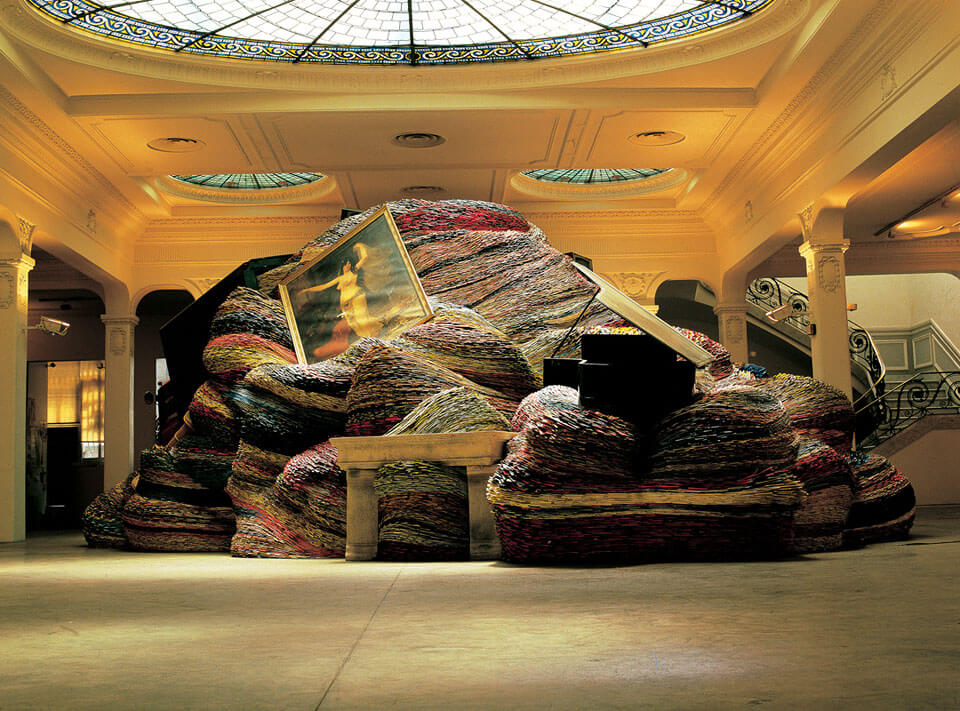
In 1980, one of the city’s modern museums began operating in the building of a vacant wholesale warehouse. The initiator of its creation was collector Rafael Tous. The feature of the exhibitions of the new institution was the innovative form of presenting elements. The Metronome Museum became a platform for expressing new, unexpected ideas and experiments of masters of different art directions and creativity.
Among the interesting exhibits are sculptures, paintings, photographs, videos, and unique works of national culture. In some places, you can see modern and forgotten dances and music. The acquaintance with the experimental art exhibits takes place using installations and other techniques of the new era. Often, it is difficult to classify the exhibition offerings into a specific type of art. Combined in one place, they are original and allow the ensemble to be called the Museum of the Future.
Exhibitions built using modern technologies are available to view without an entrance fee. There are many such museums in Barcelona, allowing you to learn interesting facts about the country’s culture even during a short trip. Who knows, maybe among the innovative works are the creations of future Dali, Gaudi, or Picasso. The temperament of the Catalans, the sea, the sun, and the mythical past have always formed great artistic abilities here. Address: Carrer de la Fusina, 9.
Montjuïc Mountain
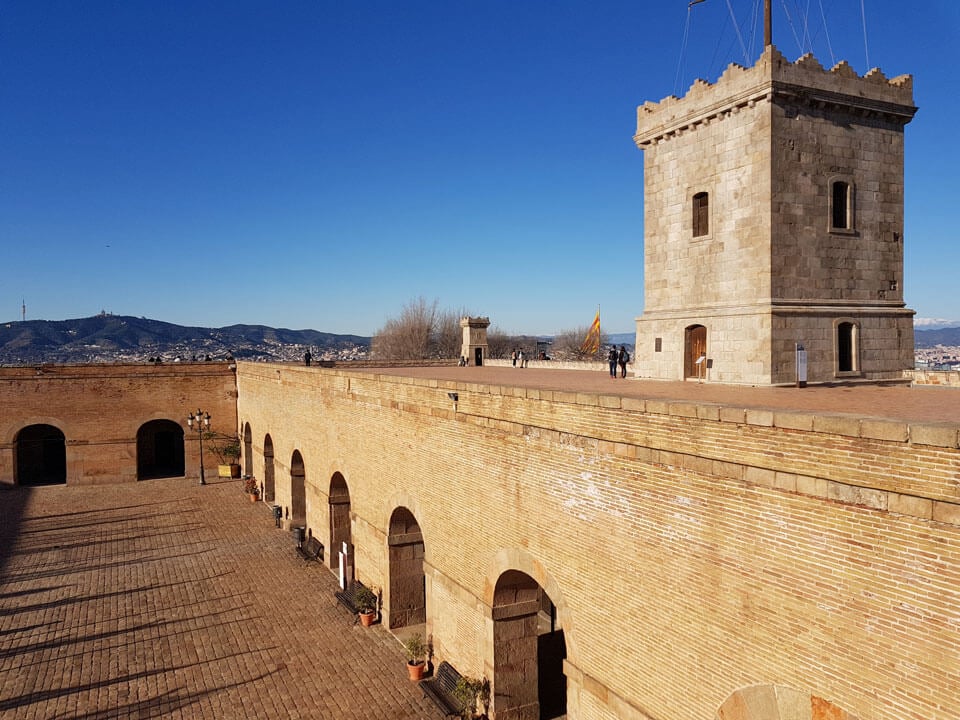
One of the best places for a free trip is considered to be the inspection of the sights of Montjuïc Mountain. From its summit, there is an excellent view of the city and the Mediterranean Sea. The climb to the 170-meter hill is recommended to start from Plaça d’Espanya. The ancient land structures (bastions, watchtowers of the famous fortress built in 1640) guarded the capital of Catalonia and were considered strategic objects.
In the 20th century, the “Jewish Mountain” or “Hill of Jupiter” got a second life: it became the largest European park. Next to the architectural masterpieces of the Middle Ages (the castle at the top, the Spanish village), new buildings of museums and the Olympic Center grew. Events in honor of the 1929 World Exhibition and the 1992 Olympic Games improved the green kingdom, creating huge botanical gardens (covering 300 hectares) with walking paths, cozy rest areas, exhibition grounds, and theaters.
Among the attractions on the mountain, tourists are drawn to: the main historical structure of the Montjuïc fortress, the Magic Fountain, and the futuristic Calatrava Tower (TV tower). The amazing steel structure, created according to the project of Santiago Calatrava, resembles an athlete holding an Olympic torch. The shadow from its spire is used to determine the time, like a sundial. The ancient breath of life is most strongly felt during a walk through the old cemetery, opened in 1883. The columbarium, sculptures, monuments, and Gothic monuments do not stand out against the backdrop of modern buildings but create a harmonious historical ensemble. You can walk here all day.
Magic Fountains
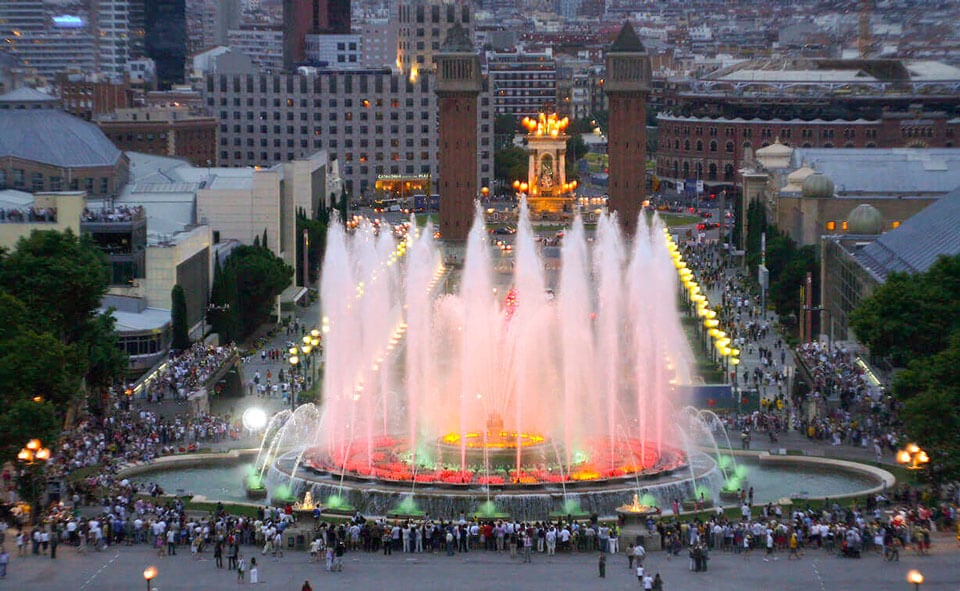
At the foot of Montjuïc Mountain, against the backdrop of the majestic Palau Nacional (National Palace), is the light and music, magical fountain Font màgica de Montjuïc. Millions of tourists come to admire the spectacle created by this unusual hydraulic structure. It’s hard to convey the feelings of a person when in the evenings, simultaneously with the music, over 3,000 jets of water soar upwards and merge in a single dance, intertwining with each other.
At the same time, the palace looks even more mysterious and beautiful. The magical effect of the fountain is created by passing water under high pressure through special metal-ceramic filters. The fountain’s lighting is constructed from 4,760 light sources with 50 shades. The fountain is supplied with water by five pumps and 2,629 individual streams. They are controlled by computer programs. The equipment is located in a machine room under the center of the fountain. You can access it. The main fountain is surrounded by oval pools built in the form of steps.
The total volume of water in them is 3 million liters. The height of the fountain streams reaches 50 meters. The Magic Fountain is part of a cascade fountain ensemble stretching from the National Palace to Plaça d’Espanya. The unique light and music show takes place in the evenings (operating on a seasonal schedule) and lasts about 3 hours with performances of 20 minutes each. Classical, folk, and popular melodies are played above the square. The water jets dance in time to the music. It is best to watch the whimsical figures while sitting on the palace steps. You can get to the magical fountain by bus 150, 13, or metro.
National Art Museum
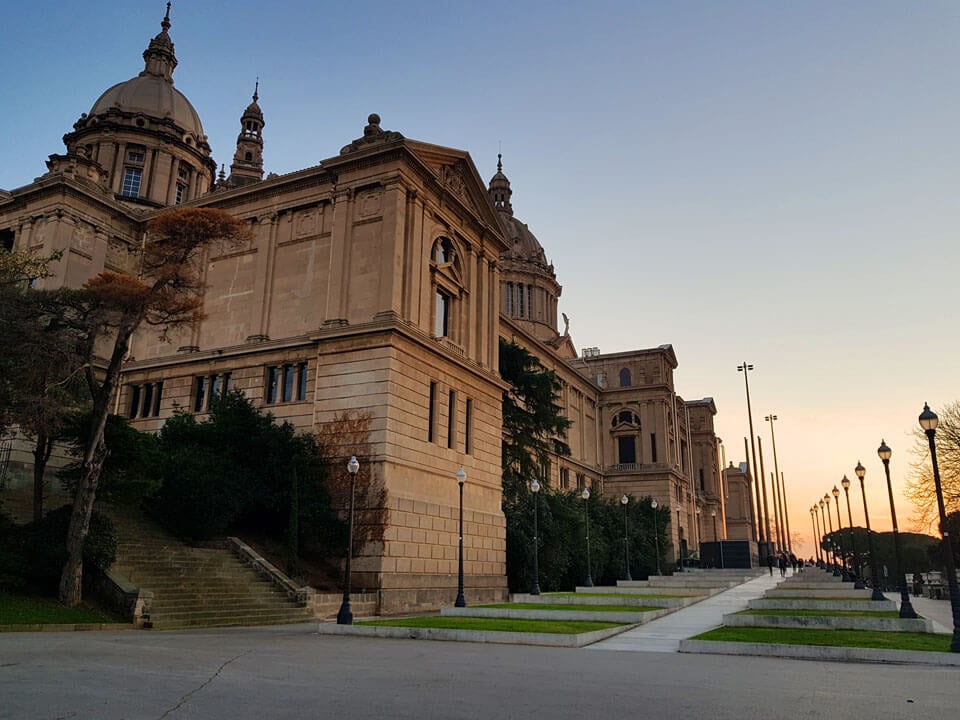
The Palau Nacional palace was built for the opening of the 1929 exhibition. The building, designed by architect Pedro Cendoia Osco, housed the Pavilion of Electricity. In 1990, the building was restored and transferred to the Museum. The first collections were formed based on elements from existing institutions of Modern Art and the Museum of Catalan Art. Now, the collection is supplemented by three cultural institutions. Since 1932, the Museum (in the palace premises) has housed exhibitions of paintings, sculptures, and various art objects.
The Museum is considered the center of collections of works from the Romanesque period. It has many artistic masterpieces created during the Renaissance, works with elements of Gothic, Baroque, and Catalan easel painting. They are presented as independent exhibitions. The Department of Modern Art of Catalonia, with paintings from the 19th and 20th centuries, is open. A separate hall is dedicated to exhibitions of engravings and drawings. These are the best works created over the last three centuries.
Moments of past life are reflected in a large collection of photographs. Understandable interest is aroused by the inspection of the numismatic department’s exhibits. Here are coins from the 6th century BC. The Museum houses restoration workshops and a library. The entrance ticket is valid for 2 days from the moment of purchase. The cost is specified on the website. For free visiting the Museum, you should come on the first Sunday of each month. Children under 15 and adults over 65 can enter for free any day.
Park Güell
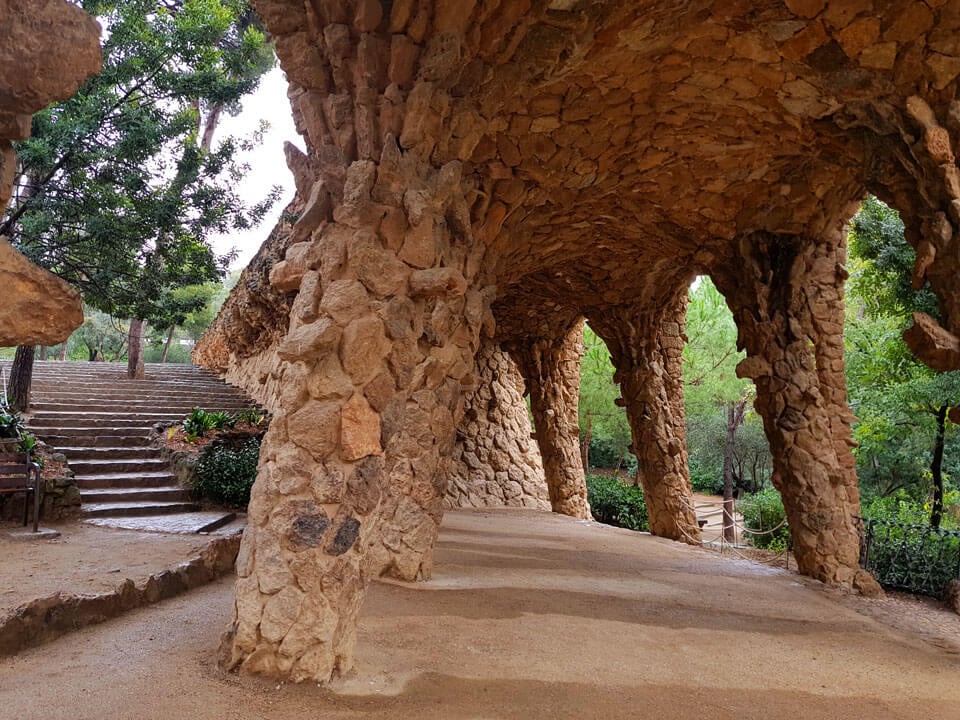
It’s impossible to come to Barcelona and not visit Park Güell. Its history began in 1900 with the idea of the richest man of the time, Eusebi Güell. He proposed to create a garden city on the Bald Mountain, which can only be seen in dreams. He invited his friend Antoni Gaudí for the work. His unusual understanding of the world and the belief that “there are no straight lines in nature, and it is never monochromatic” allowed him to create a monument of unlimited imagination and unpredictable architectural solutions.
It’s hard to determine where the elements of architectural styles end and the possession of sculptural masterpieces and volumetric painting begins. Amazing buildings, hilly pavilions, caves, grottoes, figures of fantastic animals connected with the legends of Barcelona’s appearance, stone palm trees that look like living ones. In 1984, Park Güell was included in the UNESCO World Heritage List. Since 2015, visiting the park has become paid. There is only one way (useful and good) to walk along the amazing paths, sit on the famous bench or staircase, and think while looking at the houses built by Gaudí without buying a ticket.
It’s to visit the monumental zone before it opens. There is a set time for the park’s winter and summer schedules. At any other time, the restrictive tapes are removed, providing access to the free space. After analyzing your possibilities, it’s recommended to boldly go for a walk. Twilight and darkness will not be complete, and the fairy tale looks even more real. It’s even better to visit the park with a pre-ordered ticket (just don’t be late for the specified time) and walk several times in the evening or at dawn (the park starts operating at 8:00 or 8:30 am). Park address: Carrer d’Olot, 13.
Boqueria Market
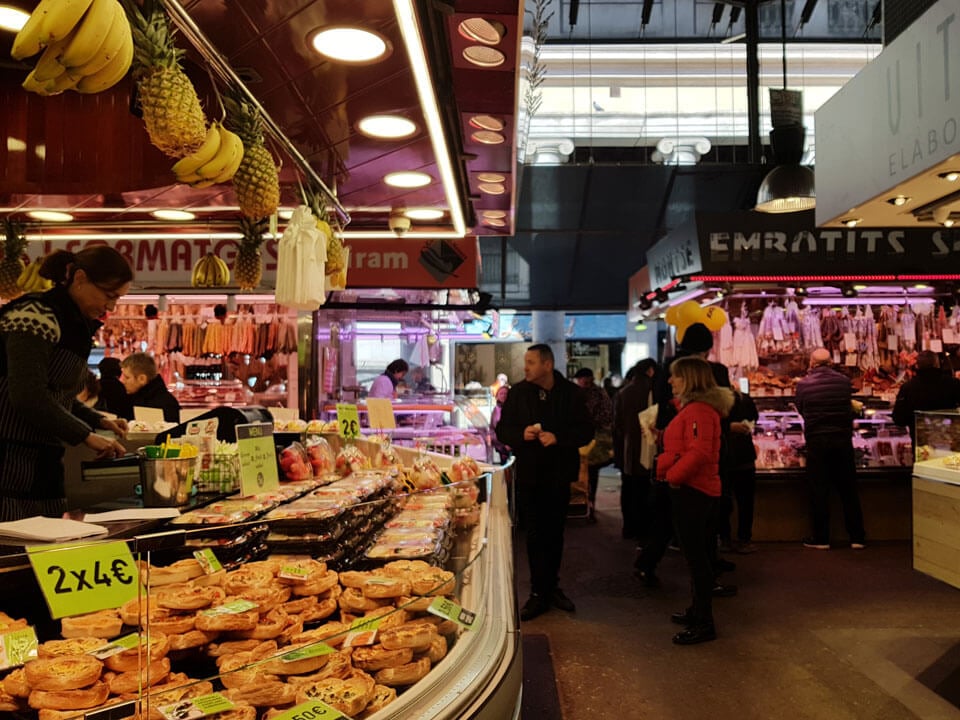
Visiting the market can be conditionally called free. There is no fee for entering the Sant Josep market, but any wallet will become lighter after a walk through the popular food market. The first mentions of the colorful market date back to 1217. Not far from the city gates, Boqueria put up stalls and sold meat. In 1470, it was called the “Straw Market” (Mercat de la Palla), where pigs and all sorts of goods were sold. Now it is a building of glass and concrete, decorated with beautiful mosaics.
The metal roof appeared in 1914. There are many shopping halls and necessary equipment here. Multi-tiered counters are filled with fragrant meat and fish dishes. They are always fresh, and the assortment is made up of products brought from different regions of the country. The best place to try the famous ham (“pata negra”) is here. And you can’t pass by the colorful fruit stalls, enjoy their extraordinary aroma, and, of course, taste the fruits of the Mediterranean paradise.
The authentic atmosphere of the old market attracts and gives pleasure from a “free” walk. To make a proper purchase, it is recommended to visit the market several times. At first glance, the eyes cannot stop at something specific and necessary. Market address: Placa de la Boqueria. The nearest metro station is called Liceu. It starts working at 7 or 8 am. The best time to visit is between 6 and 7 pm.
Sagrada Familia
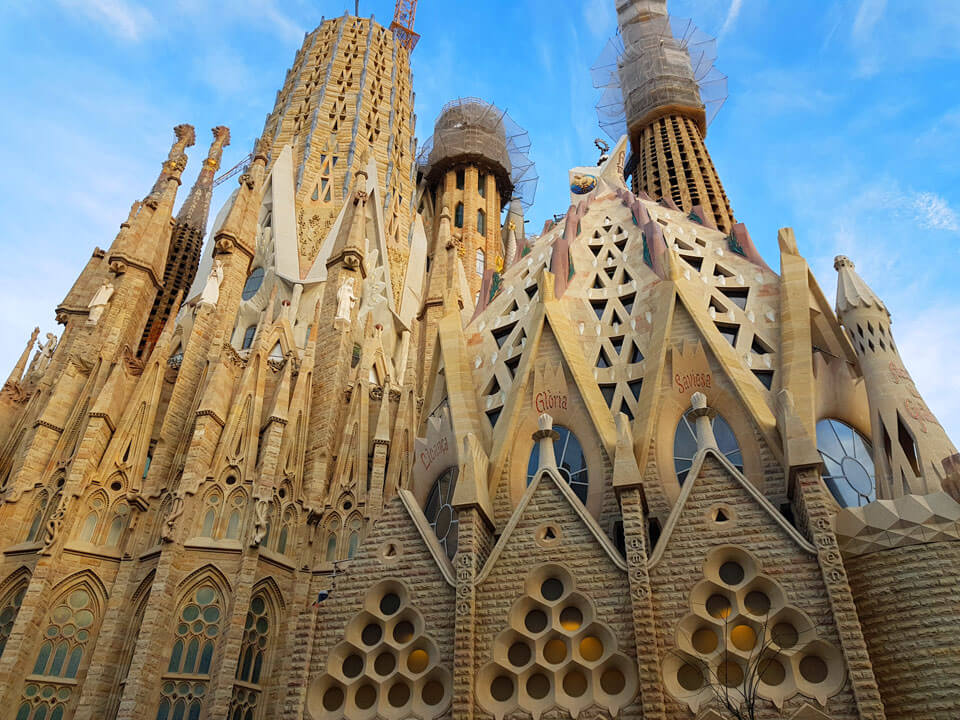
The temple is considered the most famous landmark. It is an expiatory church. From the point of view of Catholics, it is intended for the expiation of the sins of unbelief committed by the city’s residents over the last two centuries. The construction of the church was carried out with donations. It is proposed to see it inside and out. The impressions will be unique. As if a stone lace, created by an unknown power, descended from the heavens, froze, and strives for the sky and the sun.
The planet’s long-term construction project has an amazing history related to Gaudí’s work. After his tragic passing, the construction continues according to the drawings developed by the author. His imagination and unusual perception of the world gave descendants a magical stone fairy tale. The stone hands of powerful columns with capitals, reminiscent of tree branches, securely hold the structure, resembling a web of wild natural forest trunks.
Gaudí’s unusual engineering solutions, their complete compliance with the laws of mechanics, were confirmed in our computer age. The consecration of the Temple took place on November 7, 2010. It is planned to complete the construction of the Temple in 2026. And then, in front of amazed tourists, the highest Christian church on the planet (172 meters high) will appear. Currently, this place belongs to the Ulm Cathedral in Germany. The Gothic towers of the three facades (one facade of the Nativity was erected during Gaudí’s time) will indeed “sing” from the wind, like “an organ for the Lord,” filling the Temple with the music of the Creator.
Drive Through Spain: Begin Your Adventure from Barcelona
Tibidabo Mountain
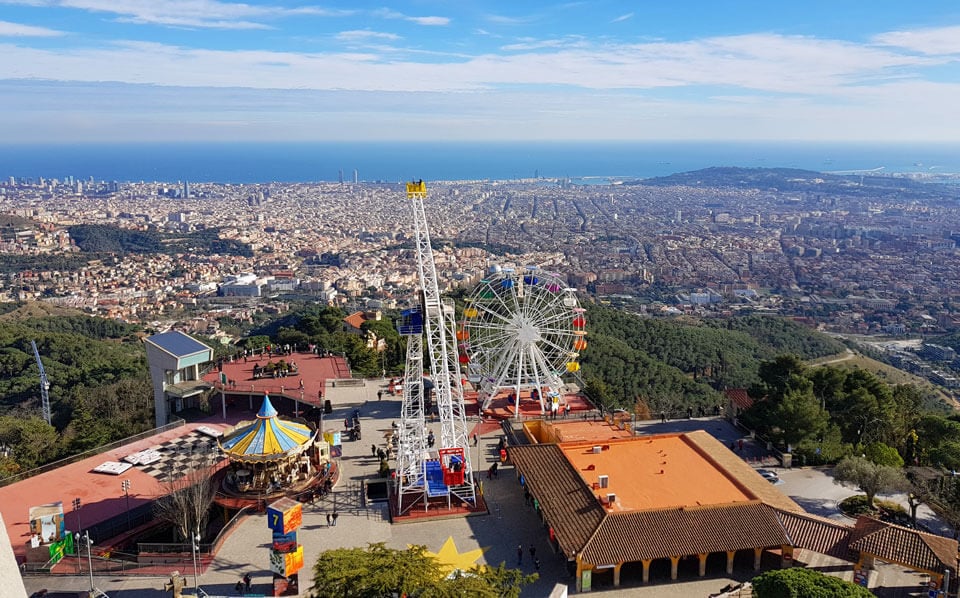
Standing on the observation deck at the feet of the figure of Christ, crowning the amazing Gothic Temple of the Sacred Heart, you cannot help but feel the spirit of the legends of Barcelona’s birth. Especially since it is visible from any point in the city and attracts with fantastic power. Here it is, the magical world created by God as an invaluable gift to humanity. “Tibi Dabo” or “I give to you” whispered the devil to Christ, offering to give all earthly pleasures. Christ did not betray man, and in gratitude, people built a temple striving for the sky, celebrating light, victory, and the sun.
Historians have proven that a monastery was located on the holy site long before the Temple was built. The aura of antiquity has not disappeared but has entered the atmosphere of the Holy Temple. You can get to the panoramic platform by the famous blue tram. The ascent to 575 meters passes over steep slopes, green masses, and gorges, adding special impressions to the trip. It is suggested to spend the whole day on the mountain (bringing food, as there are few restaurants and cafes here). The trip is especially interesting for children.
They can see the ancient amusement park with numerous rides. This includes the “Air Train” and the “Tibidabo Plane.” During the extreme flight, the entire city is clearly visible. Despite their venerable age and original appearance, the rides are safe and comfortable. The Museum of Mechanical Toys, robots, the “Viking” carousel, and the Ferris wheel operate on the territory. The park was formed when the mountain was not part of the city. The extraordinary panorama from the mountain will remain in memory for a lifetime.
Rambla Street
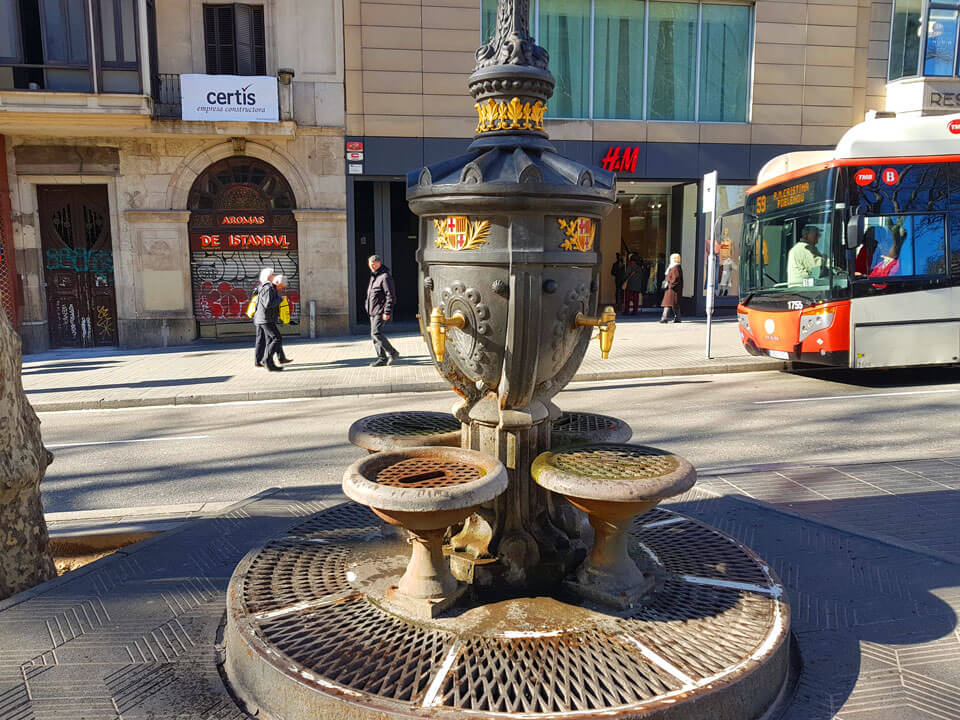
The pedestrian street of the city’s central part starts at Plaça de Catalunya and leads to the Old Port. Structurally, it represents five independent boulevards, connected into a single zone 1.2 km long. The spacious promenade on the seashore forms the bustling atmosphere of the city center and a popular walking area, lined with interesting attractions. There are always many people walking here. They look at the pearls of Catalan architecture: the Liceu Theater, the Boqueria Market, and the Virreina Palace.
They visit wax museums and the Erotic Museum. Next to the street is the famous Gothic Quarter and the building of the city’s oldest university. On the ground floors of the houses on the street, there are many boutiques, restaurants, cafes, souvenir shops, and other elements of tourist infrastructure. Useful information for those wishing to shop: the biggest discounts (up to 70%) appear in August and January.
The walking boulevard is filled with flower beds and beautiful alleys. Original “living” statues stand on it, and there is a lively bird market. At the end of the boulevard, the waves of the Mediterranean Sea splash. The most beautiful street is often called the heart of the city. Next to Plaça de Catalunya (the Maritime Rambla or Canaletes) is the famous cast-iron fountain, made in the 19th century. Tourists hurry to drink from it to test the belief and definitely return to Barcelona again.
Horta Labyrinth

On the grounds of the old Desvall estate, located on the slope of the Sierra de Collserola mountains, a neoclassical garden appeared in the 18th century, becoming the oldest park in the city. The main part of the park (which gave it its name) is a maze of cypresses. On an area of 50 by 50 meters, intricate paths are formed, lined with slender plantings. It seems easy to walk through them. But you don’t even notice how you end up in a green dead end.
From this moment, an exciting game of victory over the maze begins. Crowds of tourists strive to fall into this place. In the central point of the maze, there is a platform with benches for rest. After gaining new strength, visitors find the way out. The park consists of several levels, and a romantic garden. It has many beautiful flower beds. Pleasant streams of a waterfall can be heard. Above the labyrinth, pavilions are installed in the spirit of Spanish traditions.
Tuscan columns, statues of Ariadne, Danae, and copies of ancient Roman temples. Near the staircase leading to the last tier is the statue of the god of winemaking, Dionysus. At the top is an interesting pavilion dedicated to the nine muses and a beautiful pond with water from an underground source. Address: Passeig dels Castanyers, 1-17. You can get there by metro to the Mundet station or by bus routes 76, 73, 27, 60.
El Carmel Bunker
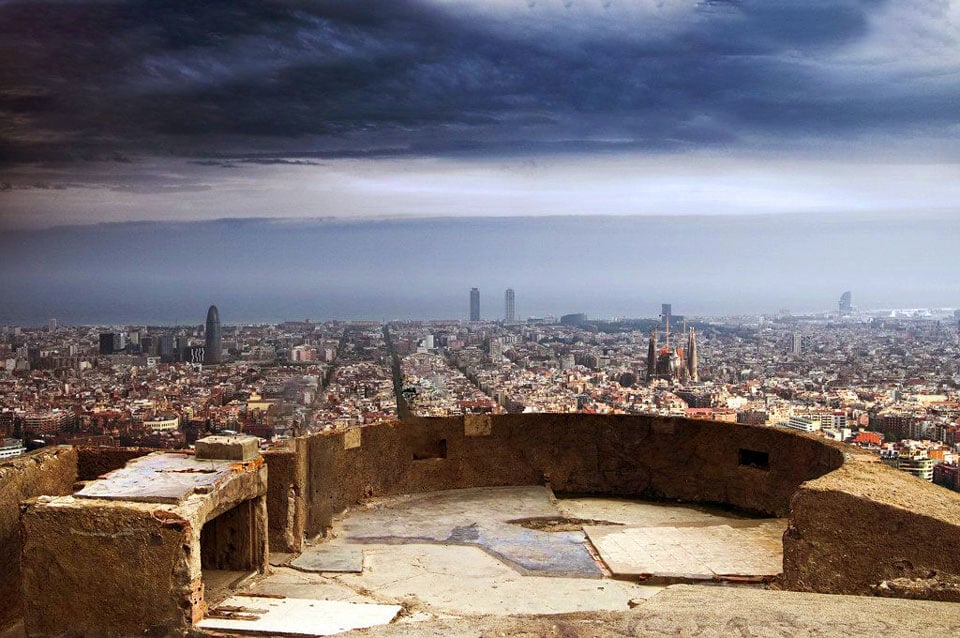
To see the beautiful Barcelona, tourists use equipped observation platforms. There are many of them in the city. One of the best places is the observation zone located in the city’s historical landmark – the El Carmel Bunker. It was built in 1947 during the civil war on the top of Turó de la Rovira mountain. The observation view from the bunker towers was 360 degrees. It was the most convenient place to observe the approaching enemy.
The walls, embrasures of the two towers used for firing have been preserved. You can walk around them and examine them in detail.
From the observation platform, you can see the streets of the nearest Eixample district stretching to the horizon. The port, the boundless sea, Tibidabo Mountain, Park Güell, and the Church of Our Lady of Carmen are all visible. The city lies very close. The bunker is located at Marià Lavernia, 59. It is easiest to get here by bus No. 119 to the Panorama-Labèrnia stop. But you can also take the metro or walk. Enjoying the city panorama is free.
Plaça de Catalunya
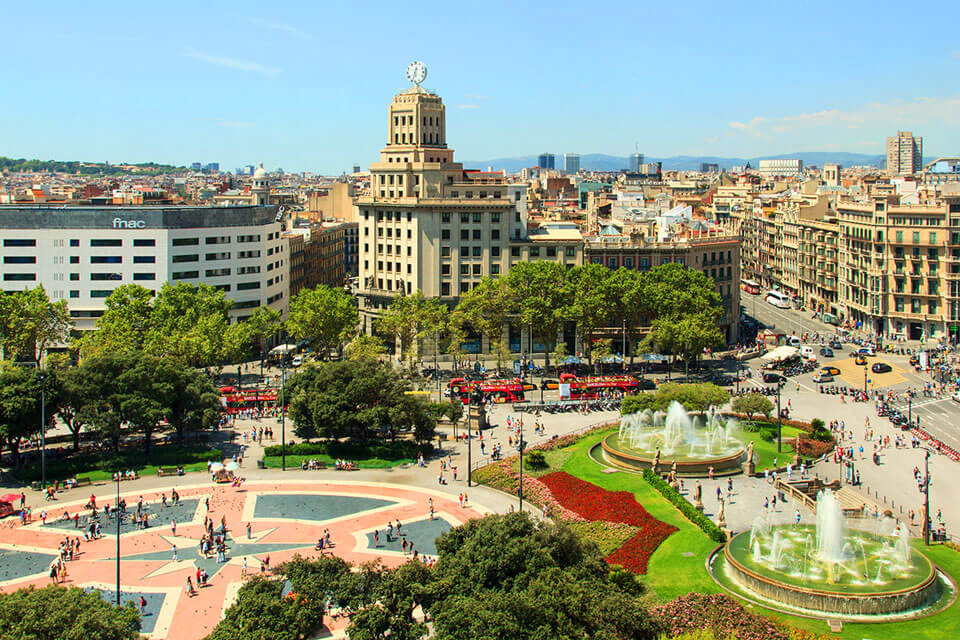
This is a convenient place to start your independent (and organized excursions too) acquaintance with the city. The central square hosts stops for many transport routes, tourist buses, and intersects four metro lines. Nine famous streets, including the famous pedestrian boulevard La Rambla, start from the square. Until the mid-19th century, there was a wasteland separated from the city by a wall.
According to the project of Ildefons Cerdà, the territory began to be built with buildings in the neoclassical and historicism styles. The round square was decorated with 28 sculptural compositions made by famous masters. An open-air sculptural museum was formed. It includes elegant statues “Youth,” “Goddess.” Complex works “Labor,” “Wisdom,” “Shepherd,” and figures of horses. Tourists are interested in the monument to the first president of Catalonia in the form of an inverted ladder, mounted on a stone pedestal.
Each of Catalonia’s four provinces is represented by its own sculptural group. Beautiful flower beds, numerous drinking fountains, and green lawns surround the square, creating a natural oasis in the heart of the bustling city. Residents hold folk festivals and concerts on the square. Tourists enjoy getting acquainted with the architectural masterpieces surrounding the square.
Among them are the Pech i Pon house, belonging to the country’s Credit Bank, the huge El Corte Inglés store with an unlimited selection of any goods and a panoramic restaurant, the Triangle shopping center, and the Zurich café. You can get to this iconic place in the capital (north-western part) by metro to the Catalunya station.
Las Arenas
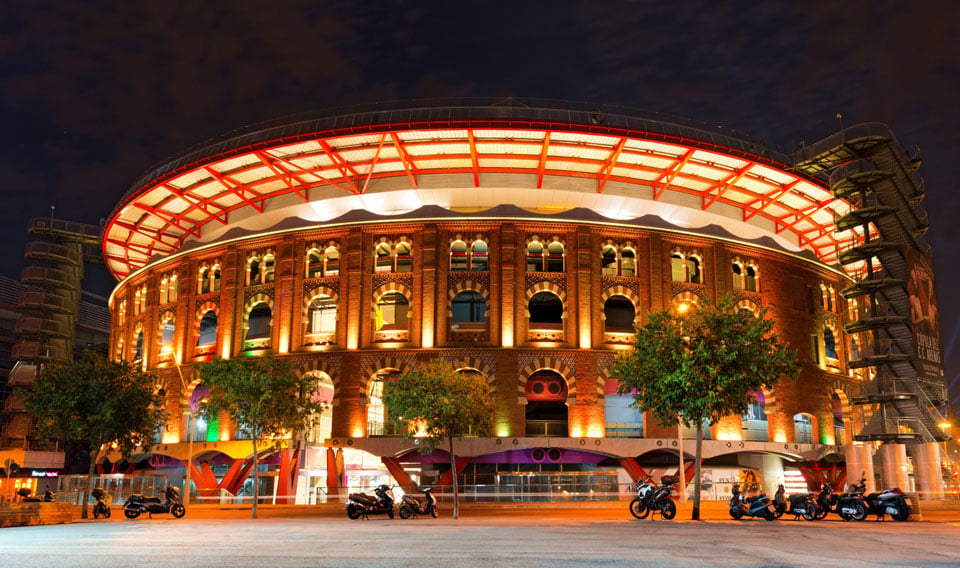
Walking around Plaça d’Espanya, you cannot miss visiting the huge shopping center. The history of the building is connected with the famous bullfights that took place here in a special arena. The ban on their holding in 2012 required changing the purpose of the building. The six-story structure now houses 100 shops, a cinema, a SPA center, a hairdresser, bars, cafes, and restaurants. Shopping enthusiasts are offered a selection of branded goods from Punto Roma, Desigual, Mango, and Celio.
Cosmetics, sports equipment and gear, household appliances, children’s toys, and clothing. The first floor resembles a market with numerous snack bars. On the top floor is the main highlight of the shopping center – an observation deck. You can get to the open terrace by a paid elevator or for free by an escalator from the shopping halls.
Around the entire circumference of the terrace are restaurants. There are ten units. Each menu includes various dishes. Fast food, sushi, tapas snacks, grilled meat cooked according to traditional Catalan recipes, and masterpieces of Japanese cuisine, etc. Sitting in any of the restaurants, you can enjoy the view of the city and the extraordinary sunset. Shopping center address: Gran Via de les Corts Catalanes, 373-385.
Encants Flea Market
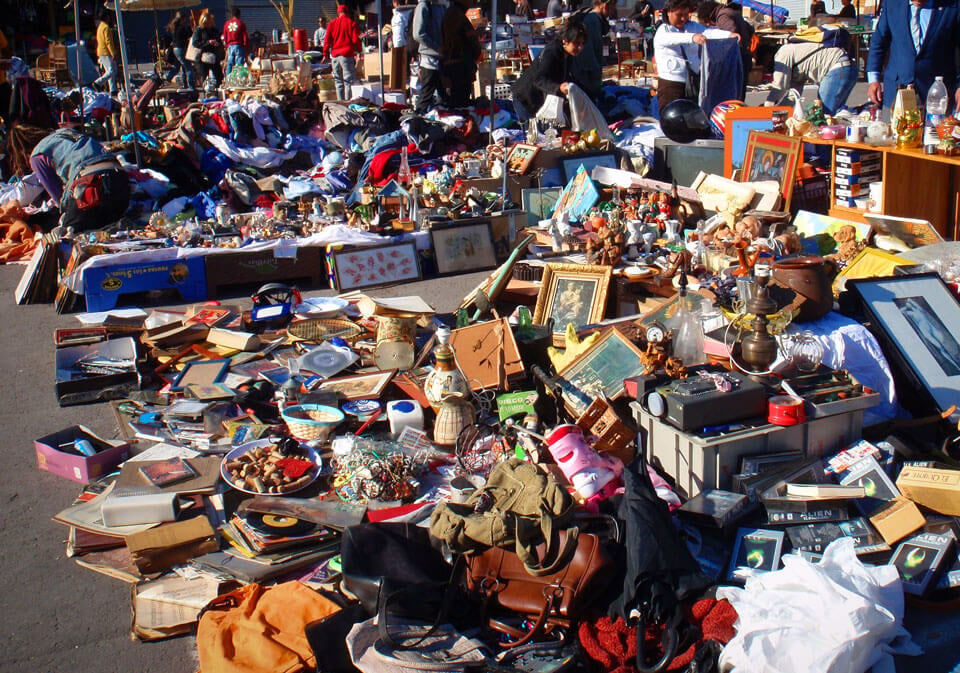
Most often, flea markets are located on a vacant lot near a big city. Here, lovers of antiques, old spare parts for various equipment, watches, cameras, etc., flock. It brings them pleasure to rummage through piles of old things in search of something interesting for themselves. Especially since you can always negotiate the price.
The history of the Encants market begins in the 14th century. It is considered the oldest flea market in Europe. Several years ago, the specific trade center moved into an ultra-modern building built using new materials and technologies. The convenient location near the Glòries metro attracts locals and tourists. The market stalls are filled with antique jewelry, lace shawls, porcelain items.
Black and white photographs, which decorate many stalls, create a special atmosphere of bygone times. The building’s mirrored ceiling multiplies the endless paradise of interesting goods. It is recommended to come here early in the morning. The chances of finding a vintage silver tray, a unique leather item, one-of-a-kind watches, and paintings increase significantly.

